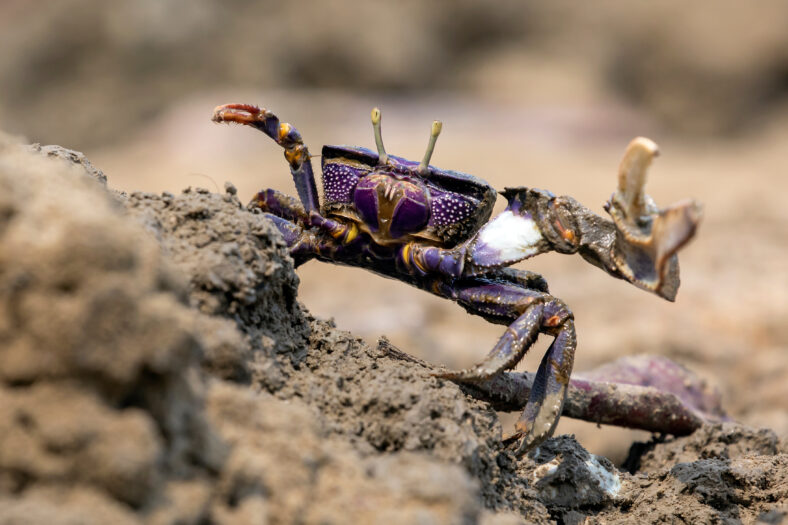Fiddler Crabs Display Their Love By Drumming On The Ground With Their Oversized Claws

In the world of fiddler crabs, displays of love involve drumming the ground with their oversized claws or hitting the ground with their shells. Until now, it has been unclear how effectively these signals were relayed to mates on the noisy seashore.
Researchers from the University of Oxford’s Animal Vibration Lab assessed the courtship behavior of the European fiddler crab (Afruca tangeri) to learn more about their communication strategies. These crabs inhabit the southern mudflats of the Iberian Peninsula.
The research team documented the male crab’s behavior using GoPro cameras and geophones, which record acoustic vibrations. They observed that the male crabs followed a four-step courtship routine that was repeated several times.
First, the crabs would subtly wave their oversized claw. Next was sequential waving and body drops to produce a vibrational signal. Then, they made simultaneous motions, and finally, they ended with an underground drumming display if the female approached the burrow. The seismic energy grew stronger with each step.
After measuring more than 8,000 percussive seismic signal recordings, the researchers found that the size of the male affected signal features.
Males with larger claws generated seismic signals with higher energy, preventing the males from being dishonest about their size. The females were then able to evaluate male quality and claw size at a distance.
“It appears as though the males cannot, or do not, lie about their physical size. Females can rely on the loudness of seismic signals to honestly assess a potential mate’s quality, all without needing to see him,” said Tom Mulder, the lead author of the study.
The frequency of the vibrations stayed constant, but the rhythm, length, and loudness of the signals differed depending on the courtship behavior. The team managed to train a machine learning program to identify varying behaviors with up to 70 percent accuracy.
This points to the potential of using machine learning to detect the presence and behaviors of animals based on vibrations—for instance, like endangered animals in the African savannah or insect pests on crops.

Sign up for Chip Chick’s newsletter and get stories like this delivered to your inbox.
Percussive seismic communication is an effective way for fiddler crabs to communicate in noisy environments. Their ability to change the volume and repetition rate of signals is to their benefit.
“Larger claws have the advantage of overcoming seismic noise so that they can signal to females that are further away, and females will show more interest in them,” said Dr. Beth Mortimer, a co-author of the study from the Department of Biology at the University of Oxford.
“However, the advantages are only observed for the percussive signals such as drumming and, fortunately, for smaller-clawed crabs, these are only part of the courtship routine.”
The details of the new study were published in the Journal of Experimental Biology.
More About:Animals





